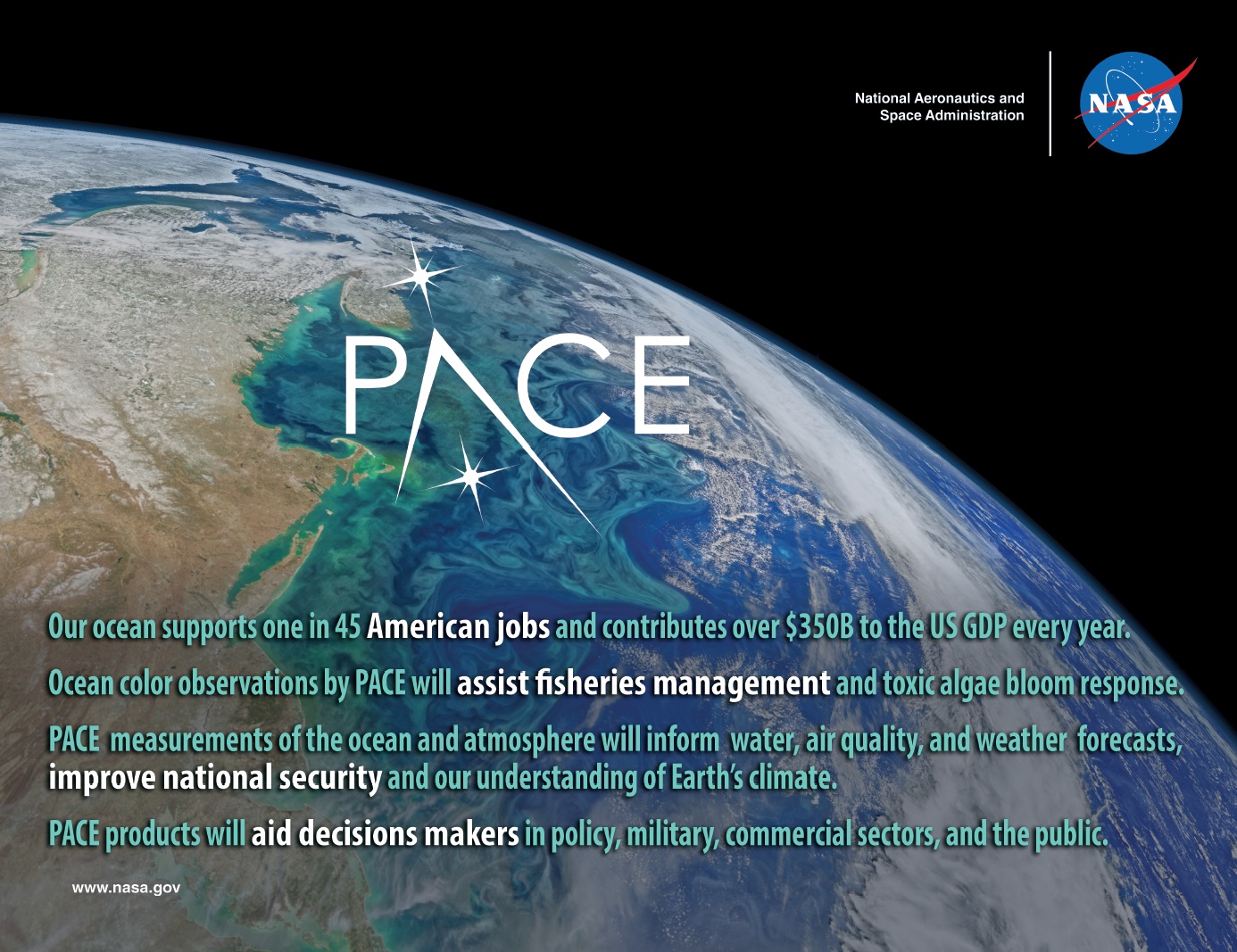PACE - Economy and Society

Download this image (JPG, 414 KB).
PACE will be the first mission to provide measurements that enable prediction of the boom-bust of fisheries, the appearance of harmful algae, and other factors that affect commercial and recreational industries. While current satellites provide essential tools for monitoring the ocean, coasts, and Great Lakes, they cannot effectively be used to evaluate changes to fisheries or identify harmful algae. Without PACE, we will continue to be blind to the impacts of diversity changes in our marine resources.
PACE will also observe clouds and microscopic airborne particles known as aerosols that scatter and absorb sunlight. Industry, the Department of Defense, NOAA, policy makers, and scientists all rely on these key data for weather, visibility, and air quality forecasts. Observing the ocean, clouds, and aerosols together will reveal previously unseen interactions, including their exchange of carbon dioxide, how some aerosols can fuel phytoplankton blooms, and how phytoplankton can release particles to the atmosphere that lead to the formation of clouds. These processes affect how much heat is trapped by the atmosphere and are vital to accurately predict weather and climate.
[Download PDF to learn more]

